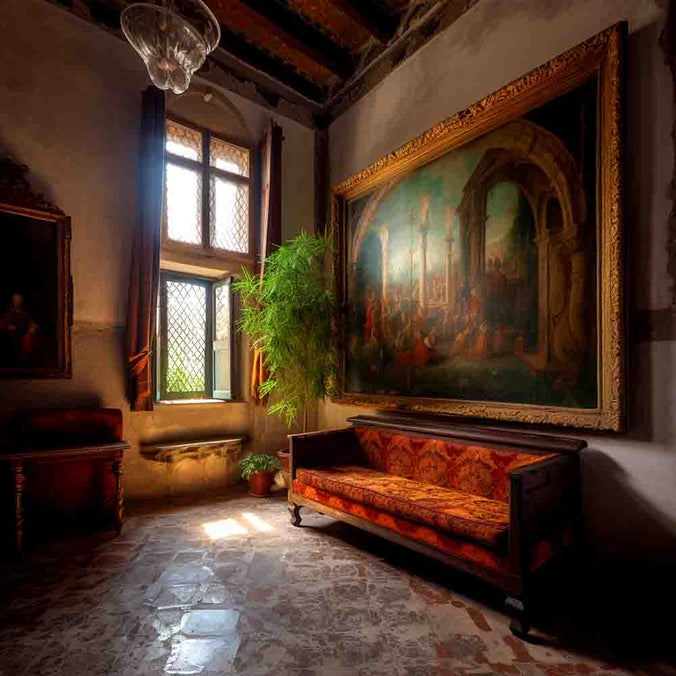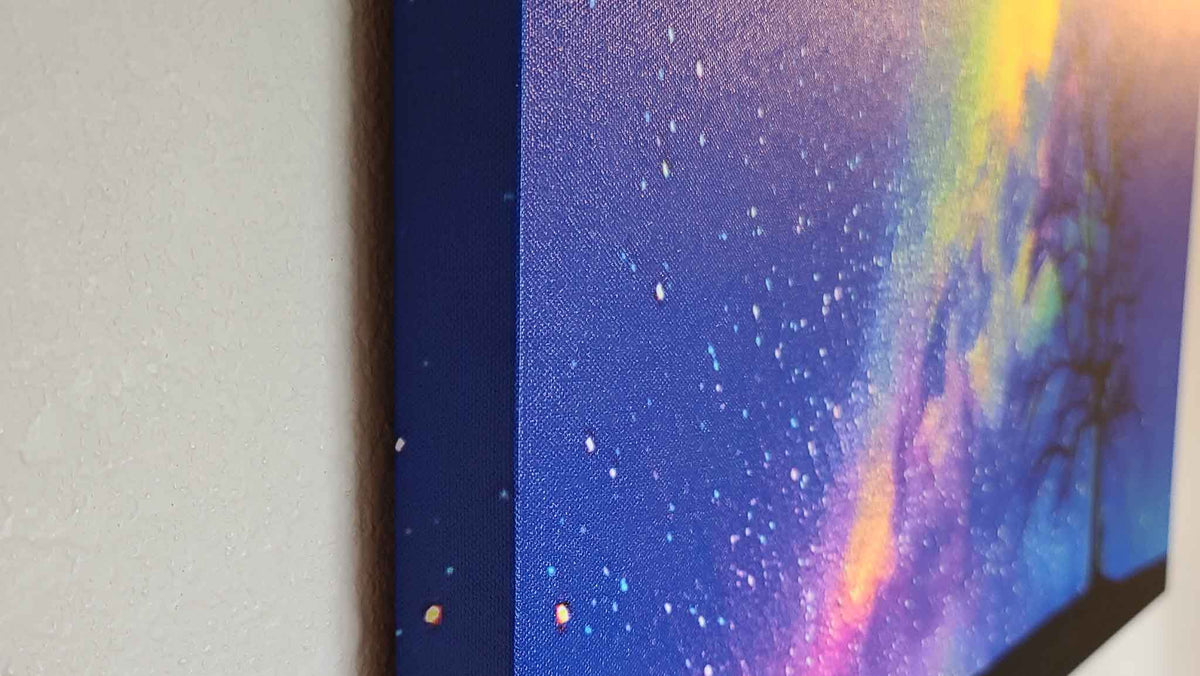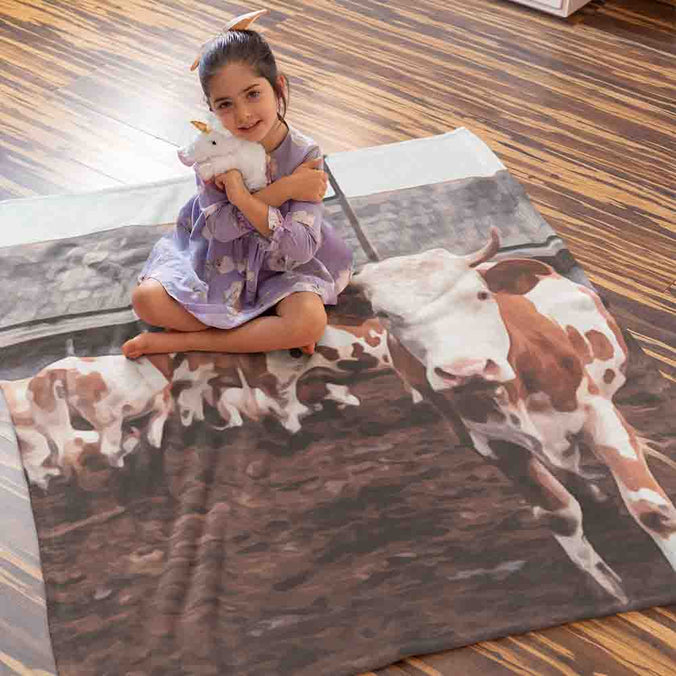The Five Elements of Feng Shui

The Five Elements of Feng Shui
Feng Shui, an ancient Chinese practice, utilizes the five elements - Wood, Fire, Earth, Metal, and Water - to create harmonious, balanced, and functional living spaces. By incorporating these elements and their associated colors, materials, and shapes into home design, workplace arrangement, and urban planning, Feng Shui enhances well-being, satisfaction, and quality of life. From improving air circulation and natural light in homes to promoting productivity in offices and shaping sustainable communities, Feng Shui offers real-world applications that contribute to aesthetically pleasing and inviting environments.
Feng Shui Element: Wood
The wood element in Feng Shui represents growth, expansion, and vitality, offering a refreshing and productive energy to any space. Associated with the east direction and the spring season, wood embodies the energy of new beginnings, symbolizing prosperity, abundance, and rejuvenation. It is an essential element for enhancing mental focus, abundance, and good health, making it an ideal choice for various areas in your home, especially the living room.
In Feng Shui, the wood element is often represented by colors such as light yellow, green, and earth tones, as they evoke a sense of nature, freshness, and renewal. Utilizing these colors in your home can help to create a harmonious and uplifting atmosphere.
To incorporate the wood element effectively, consider adding wooden furniture, accessories, and textiles to your space. For example, wooden shelves, tables, and chairs not only serve practical purposes but also help to bring the wood energy into your living environment. Textiles like curtains, rugs, or cushions made from natural fibers like cotton or linen also contribute to the wood element.
Plants play a significant role in promoting the wood element in Feng Shui. They symbolize growth, bring life-giving chi, and purify the air. Green plants and shrubs add warmth and vibrancy to any room, creating a harmonious and inviting atmosphere. Some popular plants to enhance the wood element include the ficus, rubber plant, bamboo, and peace lily. When selecting plants, opt for those with round, soft leaves rather than sharp or pointed leaves, as they promote a more gentle energy.
Historically, wood has been a crucial material in Chinese architecture and design, symbolizing strength, flexibility, and connection to nature. Ancient Chinese homes often incorporated wood in their structure and furnishings, reflecting the culture's deep appreciation for this natural element.
However, it is important to strike a balance when using the wood element in Feng Shui. An excess of this element can lead to feelings of aggression, inflexibility, and difficulty in decision-making. To maintain balance, consider pairing the wood element with the metal element, as metal is believed to control and regulate wood. This can be achieved by adding metal accents and accessories, such as metallic picture frames, light fixtures, or decorative objects.
In summary, the wood element is a vital aspect of Feng Shui that brings growth, prosperity, and rejuvenation to any space. To harness its energy, incorporate wooden furniture, accessories, textiles, and plants into your home while maintaining balance with other elements. By doing so, you can create a harmonious and uplifting environment that promotes mental focus, abundance, and overall well-being.
Feng Shui Element: Fire
In Feng Shui, the fire element symbolizes passion, energy, transformation, and leadership. It is associated with the south direction and the summer season, embodying the warmth and brightness of the sun. Fire is considered an essential element for enhancing a home's health, wealth, and overall well-being.
The fire element's primary color is red, a bold and vibrant hue that represents passion, courage, and prosperity. However, other warm colors like orange and deep purple can also evoke fire energy. The element's shapes include triangles, pyramids, and conical forms, as they mimic the natural upward movement of flames.
To infuse the fire element into your home, consider incorporating fire-themed paintings, red accents, and accessories. Artwork featuring sunsets, flames, or warm landscapes can help amplify the element's energy. Red accessories like cushions, rugs, or decorative objects can bring a touch of fire energy without overwhelming the space.
Painting walls with red hues is another way to introduce the fire element. A red focal wall can create a bold statement and become the centerpiece of a room. Alternatively, red paint can be used to add a rustic touch to floors or restore vintage furniture. Brands like Benjamin Moore offer a range of red shades, such as Heritage Red, that can suit various design styles.
Historically, the fire element has played a significant role in Chinese culture, symbolizing power, authority, and success. Emperors often donned red clothing and used red décor in their palaces, reinforcing their status and authority. Fire is also closely linked to the concept of fame and reputation in Feng Shui, making it a key element for those seeking success in their careers or social lives.
Balance is crucial when using the fire element in Feng Shui, as an excess of fire energy can lead to feelings of agitation, anger, or restlessness. To maintain harmony, consider introducing the water element, which is believed to control and regulate fire. This can be achieved by incorporating water-themed artwork, blue hues, or reflective surfaces like mirrors and metallic accents.
In summary, the fire element is a powerful aspect of Feng Shui that brings warmth, passion, and transformation to any space. By incorporating red colors, fire-themed artwork, and triangular shapes, you can harness its energy and create a vibrant, dynamic environment that promotes health, wealth, and success. However, it is essential to maintain balance with other elements, ensuring a harmonious and nurturing atmosphere in your home.
Feng Shui Element: Earth
The Earth element in Feng Shui represents stability, grounding, and nourishment. It is associated with the center of the Bagua map and symbolizes balance, health, and abundance. Earth plays a vital role in creating harmonious and supportive environments by promoting the qualities of stability and security.
The colors most commonly associated with the Earth element are earthy tones like beige, ochre, and light brown, as well as some warm yellow hues. These colors evoke a sense of warmth and comfort, helping to create a nurturing and welcoming atmosphere in your living space.
Incorporating the Earth element into your home can be achieved through various design elements, such as curved shapes, wavy patterns, and rounded furniture edges. For example, consider using round rugs or tables, and choose fabrics with wavy or organic patterns to bring in Earth energy. Avoid sharp angles and overly linear designs, as they can disrupt the flow of Earth energy.
Materials like terracotta, ceramics, and clay are also closely connected to the Earth element, so including pottery or decorative pieces made from these materials can enhance the presence of Earth energy in your home. Additionally, natural stone surfaces, like granite countertops or slate flooring, can also contribute to the Earth element.

In Feng Shui, plants are considered powerful tools for bringing Earth energy into a space, as they symbolize growth, vitality, and connection to the natural world. Rubber plants and ficus trees are particularly beneficial, but any healthy, lush green plant can contribute to the Earth element's energy. Place plants in key areas of your home to promote wealth, growth, and well-being.
Historically, the Earth element has been highly valued in Chinese culture for its association with stability and harmony. Ancient Chinese emperors would often incorporate Earth energy into their palaces and gardens, believing it would bring balance, prosperity, and longevity to their reigns.
In summary, the Earth element is an essential aspect of Feng Shui, representing stability, nourishment, and balance. By incorporating Earth colors, shapes, and materials into your home, you can create a supportive and harmonious environment that promotes health, wealth, and growth. Keep in mind the importance of balance, and consider the interplay between all five elements to achieve a truly harmonious living space.
Feng Shui Element: Metal
The Metal element in Feng Shui symbolizes strength, focus, and clarity. It is often associated with the west and northwest areas of the Bagua map, representing creativity, helpful people, and travel. Metal can be used to create a sense of order and organization in your home, leading to a more peaceful and efficient living environment.
The colors associated with the Metal element are white, gray, and metallic shades like silver, gold, and bronze. These colors evoke a sense of purity, refinement, and sophistication. Integrating these colors into your home's design can help promote the positive qualities of the Metal element.
Incorporating the Metal element into your home can be achieved through various design elements, such as round-shaped wall pendants, fabrics with curving patterns, and furniture with rounded edges. Metallic objects like sculptures, vases, and picture frames can also enhance the Metal energy in a space. Additionally, consider using materials like stainless steel, brass, and copper in your home's fixtures and hardware to reinforce the presence of Metal energy.
Historically, the Metal element has been highly valued in Chinese culture for its connection to wealth, power, and refinement. Metal was often used in crafting weapons, coins, and decorative items, making it a symbol of strength and prosperity. By incorporating Metal energy into your home, you can tap into this historical significance and invite abundance, focus, and determination into your life.
It is essential to maintain balance when incorporating Metal energy into your home. Too much Metal can create a cold, overly rigid environment, while too little may result in a lack of structure and focus. To counterbalance the Metal element, consider incorporating the Wood element, which brings growth, vitality, and flexibility. Wood and Metal elements can work together harmoniously, promoting a balanced and supportive living space.
When using Metal in Feng Shui, be cautious about placing it in the east, as this area is associated with the Wood element. Excessive Metal energy in the east can weaken the Wood energy, leading to stagnation and imbalances in your home's energy flow.
In summary, the Metal element in Feng Shui represents strength, focus, and clarity. By incorporating Metal colors, shapes, and materials into your home, you can create an orderly and efficient living environment that promotes creativity and helpful connections. Remember to balance the Metal energy with other elements, particularly Wood, to achieve a truly harmonious and supportive living space.
Feng Shui Element: Water
Water, a vital element in Feng Shui, represents abundance, fluidity, and nourishment. It is closely associated with the north direction on the Bagua map, symbolizing career, life path, and wisdom. The Water element plays a crucial role in balancing the energy within your home, promoting mental clarity, emotional well-being, and a sense of calm.
The colors connected to the Water element include various shades of blue and green, evoking feelings of tranquility, peace, and renewal. These colors can be introduced into your home through paint, fabrics, and decorative items to enhance the presence of Water energy and create a soothing atmosphere.
Incorporating the Water element in your home can be achieved through various design elements such as water features, mirrors, and artwork depicting water scenes. Water fountains, fish tanks, and small ponds can serve as powerful focal points in your living space, attracting positive energy and promoting relaxation. Mirrors, with their reflective surfaces, mimic the qualities of water and can be used strategically to expand space, circulate energy, and improve the flow of chi.

Throughout history, water has held great significance in Chinese culture, symbolizing abundance, prosperity, and the cycle of life. It is believed that water can gather and retain positive energy, making it an essential component of a balanced and harmonious home in Feng Shui. By incorporating the Water element into your living environment, you can tap into this ancient wisdom and invite prosperity, clarity, and emotional balance into your life.
When using the Water element in Feng Shui, it is important to maintain cleanliness and avoid stagnation. Stagnant water can attract negative energy and create an unhealthy environment. Regularly clean and maintain water features, and ensure that water flows freely to promote positive energy.
The Water element can be particularly beneficial in bedrooms, where it promotes health, well-being, and a sense of security in relationships. Introducing water-inspired colors, artwork, or a small water feature in the bedroom can help create a calming and nurturing atmosphere, supporting restful sleep and emotional balance.
In conclusion, the Water element in Feng Shui represents abundance, fluidity, and nourishment. By incorporating water-inspired colors, design elements, and features into your home, you can create a tranquil and harmonious living environment that promotes mental clarity, emotional well-being, and prosperity. Remember to maintain cleanliness and balance in your use of the Water element to fully enjoy its benefits and create a truly nurturing sanctuary.
Real-world benefits and applications of Feng Shui
Feng Shui is a practice that, while rooted in ancient Chinese traditions, can provide various real-world applications in the arrangement and organization of spaces. By focusing on the design and layout, Feng Shui aims to create environments that are more harmonious, aesthetically pleasing, and functional. In this section, we discuss the real-world benefits and applications of Feng Shui in home design, workplace arrangement, and urban planning.
Home Design: Feng Shui principles can be used to enhance the design and organization of residential spaces, making them more comfortable and visually appealing. The practice encourages the optimal arrangement of furniture, strategic use of color, and incorporation of natural elements. These principles can lead to improved air circulation, increased natural light, and an overall sense of balance and harmony within the home.
Workplace Arrangement: Feng Shui can also be applied to office spaces, promoting productivity, employee satisfaction, and well-being. By arranging workstations in a way that maximizes natural light, minimizes distractions, and encourages interaction among team members, Feng Shui can contribute to a more efficient and collaborative work environment. Moreover, the use of plants, artwork, and ergonomic furniture can further enhance the workplace atmosphere and employees' well-being.
Urban Planning: Feng Shui has been employed in the planning and design of entire cities and neighborhoods. By taking into consideration the flow of traffic, the placement of green spaces, and the arrangement of buildings, Feng Shui can contribute to the creation of communities that are not only visually appealing but also functional and sustainable. This can lead to improved walkability, reduced pollution, and increased overall quality of life for residents.
Interior Design: Feng Shui can guide interior designers in selecting appropriate colors, materials, and shapes that contribute to a balanced and harmonious space. By understanding the relationships between different elements and principles of Feng Shui, designers can create environments that feel both inviting and cohesive, leaving a positive impression on occupants.
Gardening and Landscaping: Feng Shui principles can be applied to the design of outdoor spaces, such as gardens and landscapes. By incorporating the natural elements of water, wood, and stone, as well as considering the balance between yin and yang energies, Feng Shui can help create outdoor environments that are both beautiful and relaxing.
While Feng Shui has its roots in ancient traditions, its real-world applications are numerous and can contribute to the creation of balanced, harmonious, and functional spaces. From home design to urban planning, Feng Shui principles can guide the organization and arrangement of spaces, leading to improved well-being, satisfaction, and quality of life for those who inhabit them.
Leave A Reply
Your email address will not be published. Required fields are marked *






